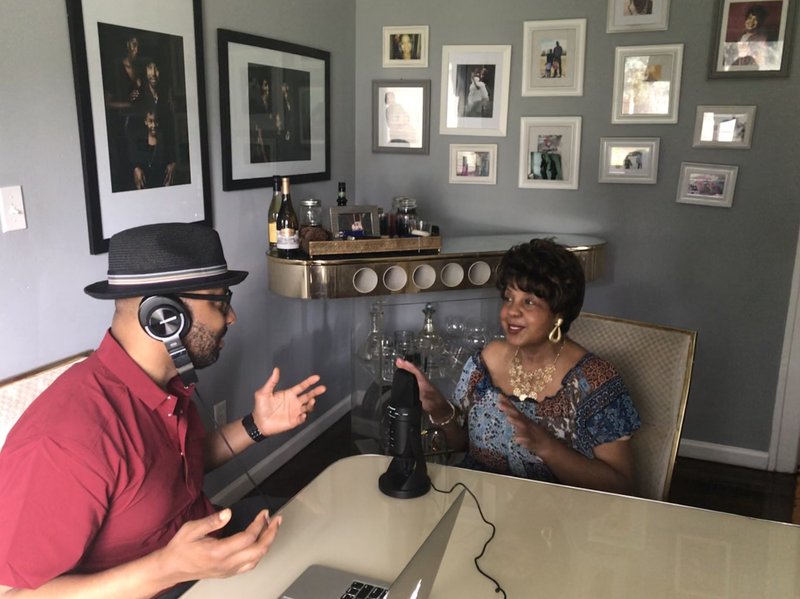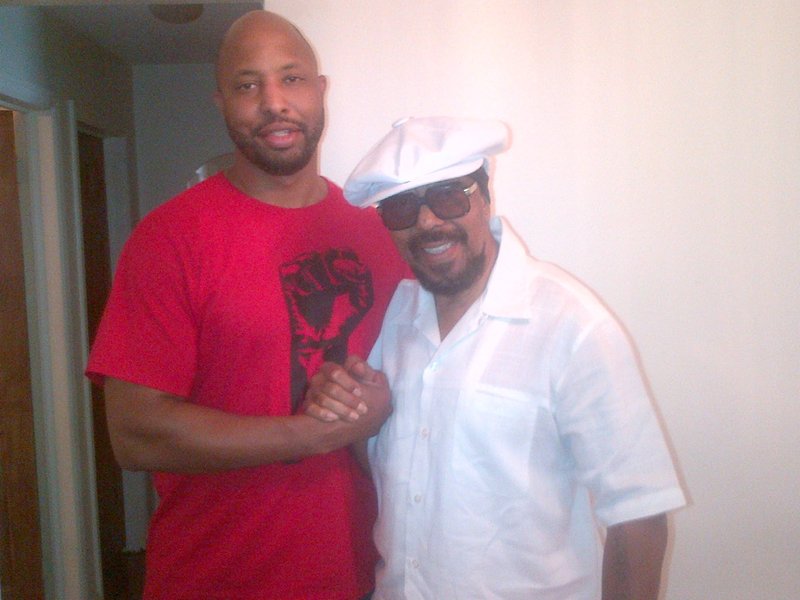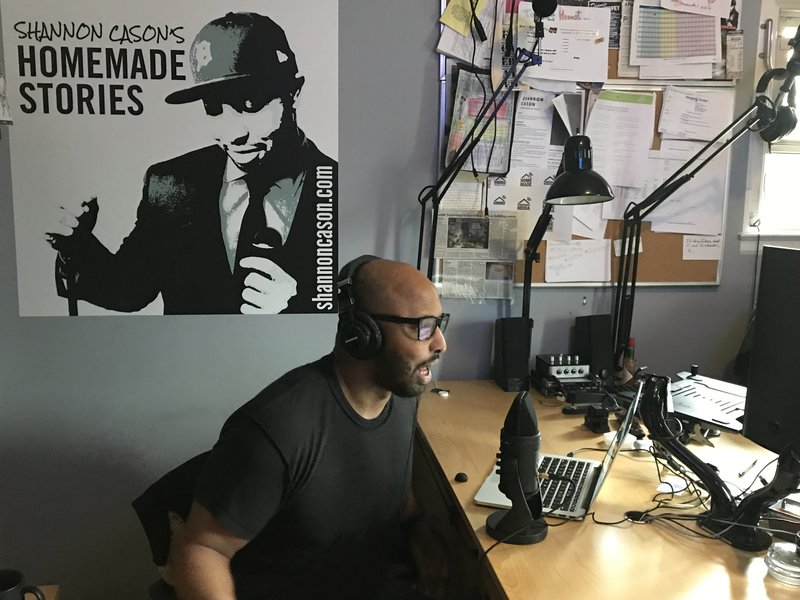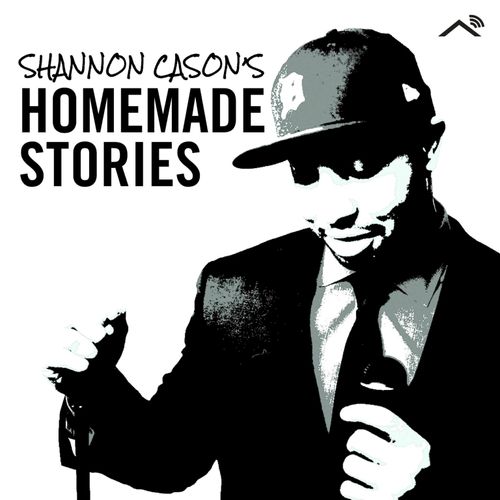Recording the Parents: Capture the stories and voices of your family.
Father’s Day. Mother’s Day. Thanksgiving. Christmas (esp. because I have kids). I have to do it. I’ve gotta spend time with them. You do too. Either if they’re together or apart, but in my case, they divorced when I was seven. I’m talking about quality time with The Parents.
My mom will ask inappropriate probing questions. “No Mom, I haven’t spoken with my ex-wife about her new family.” Dad will act as though he forgot I was even there. “Hey Dad, can you turn off the true crime TV and talk to me for a second.” And I will endure the time until I have an excuse to leave. “Well I have to get back home because I forgot some beers in the freezer.”
But I’ve found a way to make these unbearable QT moments valuable, and use it as content for my Homemade Stories Podcast, and ultimately, documentation for my entire family for years to come.
Interview Your Parents
Interviewing parents is leaning into mandatory family time. Think about it. I’m already in the homes I grew up in. And each of them still live in those homes. Why not create more memories that can be re-visited time and time forever? For myself, and even after I’m…(I don’t want to talk about it). But for my kids and their kids. You get it.
And as much as I hate to accept it – I have questions.
● What crowd did my parents hang with in high school?
● Did they have other career aspirations?
● I have health questions.
● I have questions about navigating the next stage in my life.
● Do they have any regrets?
There’s no better way for me to ask these questions than a one-on-one interview with my parents, because the answers won’t just naturally happen.

Shannon with mother Bessie Mae Cason
Getting the Parents Comfortable
Dad loves his chair in the back room. It was a gift from his current wife. His body has molded to that chair. At this point, I believe he loves that chair more than me. I know the space that chair is in is a comfortable place for him, so I recorded him in his space.
Mom loves her dining room table. There used to be family dinners at this table. Mom sat there and all the rest of the family sat around. Now it’s mostly used to stack books and newspapers instead of dinners. I moved some books aside and recorded my mom from where she was comfortable.
Audio is Different
Audio is less intrusive than video. I can’t imagine bringing lighting and tripods and expensive cameras in my Mom’s dining room. She would stiffen up. She may be hesitant to have a brutally honest conversation with her son with the lights, camera, action.
Also, sound has a different effect on our brains than video and pictures. As it turns out, our brains stores auditory information differently. Auditory memories are more temporary than visual memories. We tend to forget what a person sounded like first. However, when we hear an audio memory it immediately places us in the scene in a different way than pictures and video as well. We turn toward a voice as if it’s right there.
To record my mom, I sat my Samson G-Track Pro on the dining room table with it plugged into my laptop. I positioned our chairs across from each other at the end of the table, so we wouldn’t be too far from the microphone. I used the “Fig 8” setting and the “Mono” mode.
I tested the sound with my Samson Z55 headphones by asking my mom, “What did you have for breakfast?” I checked my own sound by telling her, “I don’t need to hear about lunch and last night’s dinner, Mom. Just breakfast. I was only asking for sound levels.” Then I sat the headphones to the side. The sound was good.
To record my dad, I attached my Samson G-Track Pro to a boom arm and positioned it while he sat in his chair. Then I asked him to turn off the true crime TV and talk to me.

Shannon Cason with father Billy Cason
Editing for the Podcast
Expect the interview to be a long talk. Once my dad got comfortable with the microphone pointed in his direction, he was ready to share his epic life story. It lasted three hours! And it was mostly him telling me how great he is at everything.
I handed the tape off to my sound editors at WBEZ Chicago, their ears immediately started bleeding. To assist the editing process – and not limiting the conversation – I kept time-stamped notes on where the conversation got interesting. I looked at my recorder and simply noted the time.
It’s good to have producers and editors, but when it’s only me, I try to listen back to the tape with the ears of a first-time listener. I wipe my mind clear, and honestly ask myself, “Why is this interesting?” I have to have an answer for that question.
Document Life Always
After interviewing my mom and dad, I edited each talk and used them for my podcast, Homemade Stories. My podcast is a chronicle of personal stories and commentary.
Interviewing your parents is so simple with the right equipment. It’s irresponsible if you don’t do it. We have voice recorders on our tablets, phones, and even our watches. A professional level microphone can be placed on a table and connected to a laptop or a recorder in minutes.
The stories I’ve captured of my family are my personal treasures. These stories are my gifts to everyone. Because when everything and everyone is gone, all we have left is our stories.
Listen to Shannon Cason’s Homemade Stories:
Conversation with Dad (Warning: Explicit content and language) – HS #77 The Man
Conversation with Mom – HS #107 A Mother’s Worry

Shannon Cason has told stories all over the country with The Moth, Snap Judgment, and his own podcasts, Homemade Stories and The Trouble. He is the chief educator for the Brutally Honest Storytelling workshop series and has worked with WBEZ, WDET, Spotify, and many organizations. He is originally from Detroit. Find him at shannoncason.com.
